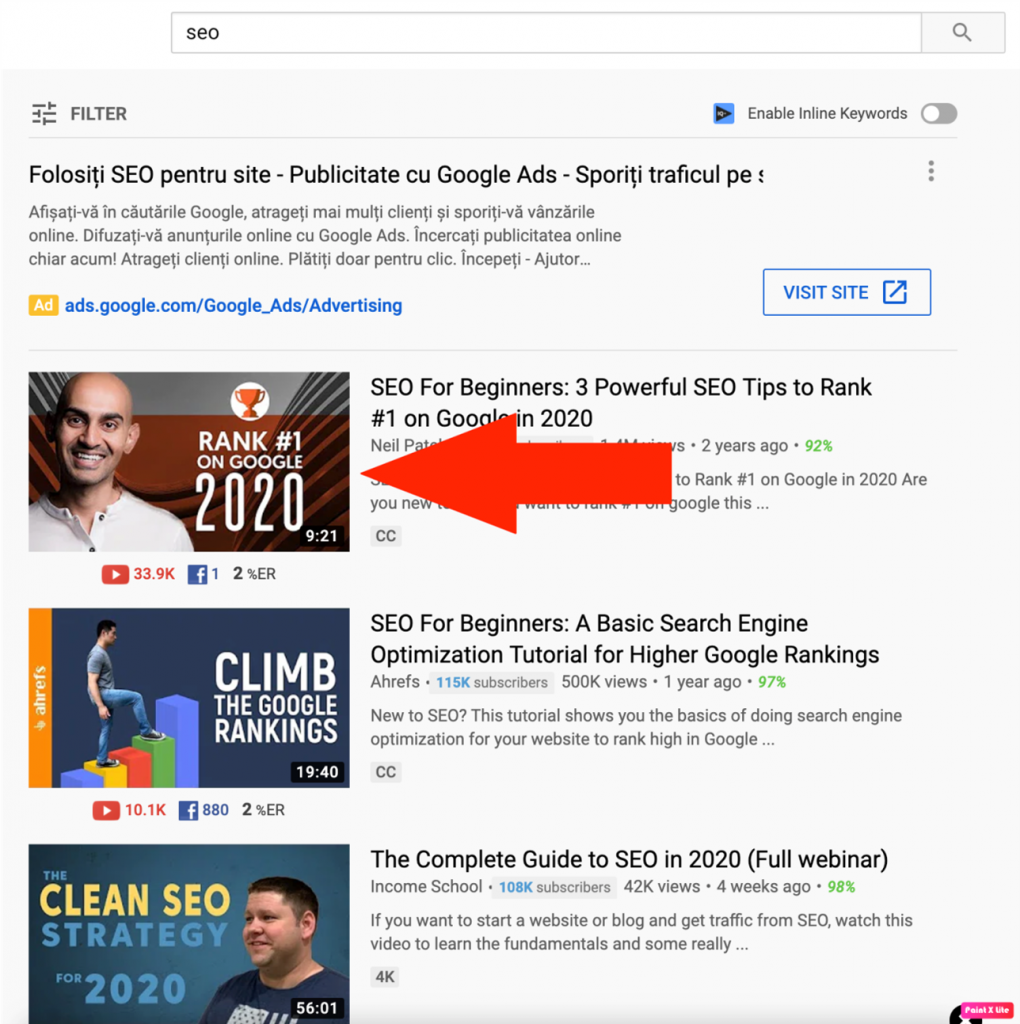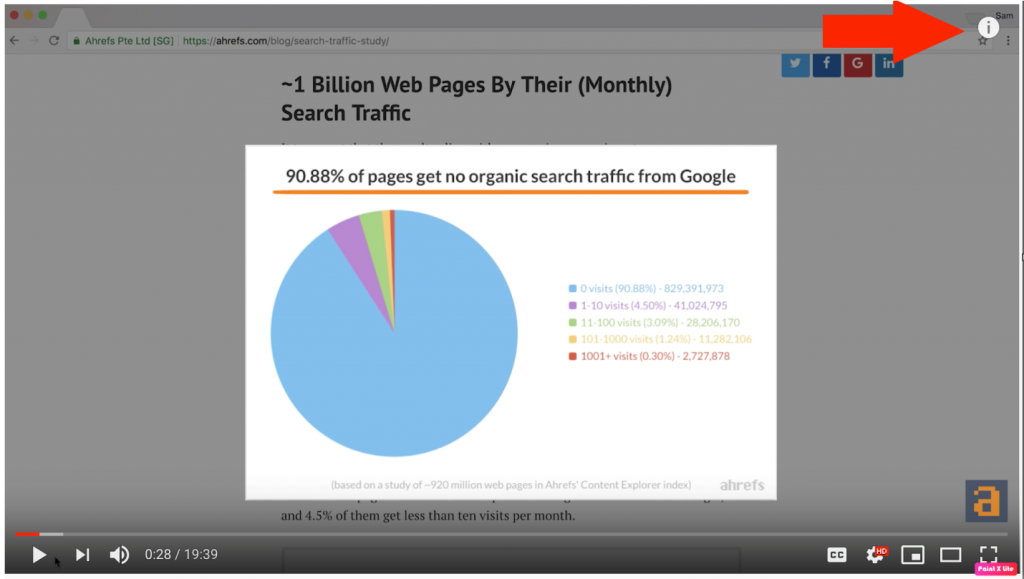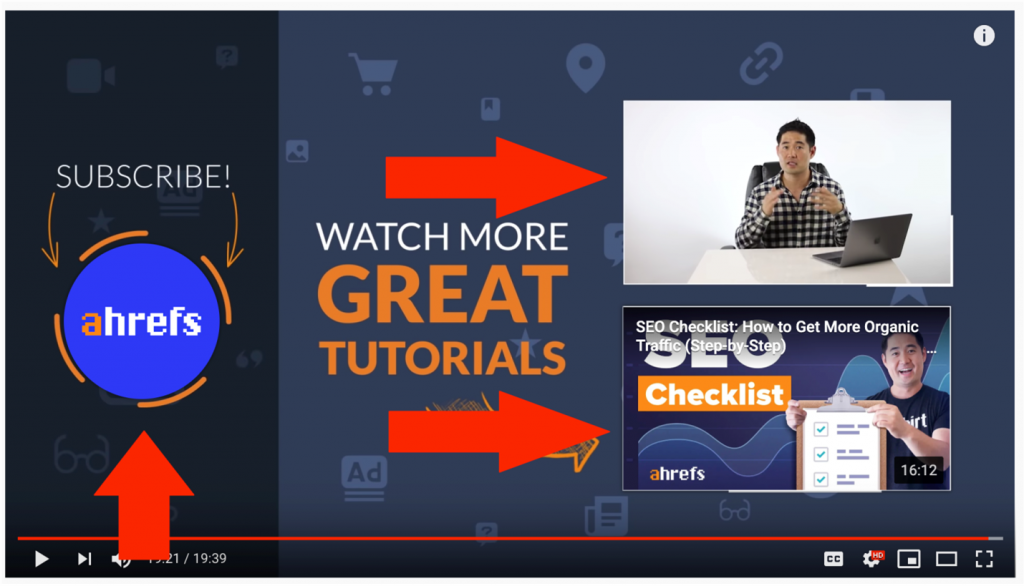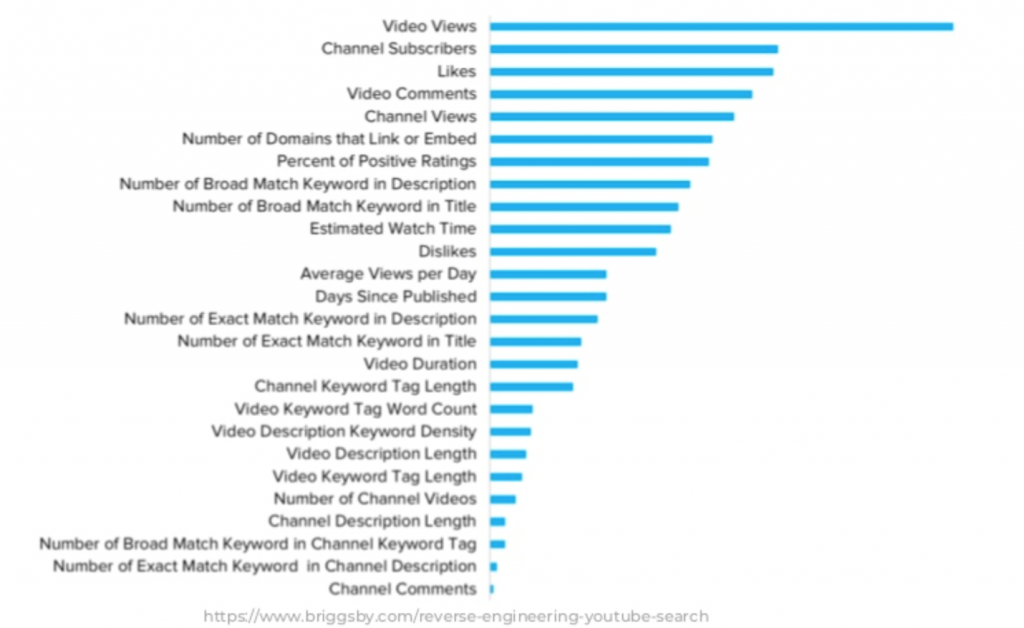When YouTube appeared, few people imagined what impact it would have in a few years. The first video was posted in 2005. Youtube was bought by Google a year later, and by 2013, it had a billion users.
In 2020, things have evolved a lot, reaching more than two billion users. There were many ads, but also the solution – Youtube Premium.
Let’s see some statistics that help us understand the impact of this platform and its algorithm:
- YouTube is the second most visited site and the second most used search engine on the internet, after Google.
- These users (2 billion active) watch over a billion hours of videos a day, generating billions of video views.
- Over 70% of the total viewing time comes from mobile devices.
- Users spend over an hour a day watching YouTube only on their mobile devices.
- 80% of views are from outside the United States.
- 65% of users try to find solutions to their problems on this channel.
- 70% of views come from suggested videos.
- 50% of users were previously interested in a product or service on Youtube, then searched for it offline
- A page can be improved by 80% by adding a video, its traffic increasing by 157%.
But how does YouTube SEO work? What steps do you need to take to optimize your YouTube search channel? We have presented below the main rules and the best tools for wow results.
Basic rules
As we read above, we already know that the Youtube algorithm is given in the largest proportion by the recommendations of similar videos. This is the big secret: to be able to include our videos in that list.
Below you will find the basic rules of SEO optimization of videos by including the main keywords in the appropriate sections.
Keyword research for Google and Youtube
First of all, we need to do some keyword research. The procedure is similar to that for Google.
This step is recommended just before choosing your video theme, to choose a theme with a high search volume and the most relevant words for it.
Some tools for a great keyword research on Youtube: Google Trends, Ahrefs (Keywords research for keywords, Content Explorer for other videos and with Site Explorer – high traffic videos), Youtube Ads, YouTube Autosuggest, but and vidIQ extension.
Rename the video file before uploading
Even if it doesn’t seem to be a factor in helping SEO optimize for Youtube, the name of the video file can help the search engine understand what the video is about.
That’s why it’s important to use the most relevant keywords in keyword research to rename your video file before uploading it.
For example, for a video explaining the steps of SEO optimization on Youtube, the video file can even be named “seo_youtube_ optimization”.
Video title
As with Google, the title is an important ranking factor for Youtube. It’s the best place to use keywords with the highest search volumes, as early as possible.
The recommended character limit is 60 characters.
Video description
The description is the second most important place to include these keywords. First, we will make the search engine understand what words we want to be found for, and second, we will help users understand what the video is about and how they can interact with our channel.
The recommended limit for YouTube video descriptions is 1000 characters.
If you choose to write a longer description, keep in mind that YouTube only displays the first two or three lines of text (the 1000 characters). After that, users need to click on “show more” to see the full description.
Therefore, it is recommended that you include relevant keywords and important information, such as Call to Action or important links, at the beginning of the description.
Don’t forget the hashtags!
Tags
The official YouTube creative academy suggests using tags to let users know what your video is about.
Youtube uses tags to understand the content and context of videos. This way, it can figure out how to associate the video with similar ones, which can expand the coverage of your content.
The purpose of the tags is to explain the content of the video. An irrelevant but popular tag will not help you reach the videos that are relevant to those tags. You can even be penalized by Youtube.
Use the VidIQ boost to get recommended tags and suggestions.
Categorize the video
Grouping videos into categories helps Youtube make certain playlists and frame videos in certain patterns. Which can be very helpful for all of us in reaching the target audience.
It may not be as simple as it sounds. In fact, the YouTube Creative Academy suggests that marketers go through a comprehensive process to determine which category each video belongs to. It is helpful, the guide writes, to “think about what works well for each category,” which you consider by answering questions such as:
Who are the best creators in the category? What are they known for and what do they do well?
Are there patterns between similar channel audiences in a particular category?
Do videos in a similar category have distribution qualities such as value, length, or production format?
Thumbnail
The video thumbnail is the image that viewers see in Youtube search results. These are usually the first thing you look at before you click on a video.
Along with the title of the video, that thumbnail sends a signal to the viewer about the content of the video so that it can impact the number of clicks and views it receives.
Creator Academy reports that “90% of the best-performing videos on YouTube have custom thumbnails”, recommending the use of 1280 × 720 pixels images – representing a 16: 9 aspect ratio – that are saved as 2MB or smaller. jpg,. gif, .bmp or .png files.
The YouTube account must be verified to upload a custom thumbnail image. To do this, go to youtube.com/verify and follow the instructions.
Tips for thumbnails:
- Light and dark contrasts between foreground and background;
- The image of a person with authority always helps;
- The text is not always required in thumbnail, the title is enough.
Subtitles
Subtitles are another way to provide context for your video content, both for Youtube and for users, especially when they can’t listen to the video.
There are two ways to add subtitles to your video, depending on its language:
Manual
Automatic – SRT file
Romanian is not yet in the list of languages eligible to upload an SRT file, so you will have to do it manually. Youtube offers help in this regard, already dividing the sections where a voice is heard.
For either mode, click “Videos” in “Video Manager”. Find the video you want to add subtitles to and click the drop-down arrow next to the edit button. Then choose “Subtitles / CC”.
Adding cards and end cards
YouTube cards are an interactive feature that encourages viewers to take one of five actions:
- Watch another video or playlist;
- Discover another YouTube channel;
- Donate to a nonprofit;
- Take a survey;
- Access an external link;
All you have to do is select the type of card you want to use, choose a suitable option (for example, video or playlist) and select a moment in the video where you want it to start.
When a viewer reaches those seconds, the title of the video will enter as a suggestion. When a user clicks on the info icon, they can choose to watch the suggested video.
End cards are similar to cards, except that they appear at the end of the video.
These are small thumbnails that encourage viewers to explore more content or target audiences to take action.
The most used end cards are with the Subscribe button and other similar videos in the playlist. Youtube will also understand that you are trying to report similar content and will place it in the video suggestion list. This can also help you get more subscribers and keep viewers consuming your content.
Publishing and promoting the video
After you publish the video, there are a lot of ways you can promote it to help it reach the audience you want. Some examples:
- Youtube Ads
- Facebook Ads
- Influencers
- Embed in the blog, as we will discuss below.
Embedding
As we read in the studies at the beginning of the article, including a video on a web page increases its performance considerably. So why not get views for our videos on Youtube?
Embedding a video is recommended for several reasons:
- Ease of adding the video to the article (copy paste of a simple HTML code, of an iFrame)
- Minimal resource consumption because the video will not run on your site, so in terms of resource consumption, your server does not suffer.
- You will absolutely never have copyright issues when you embed videos (if you are not the copyright holder of the video), because the legal issue is in the hands of the hosting platform, in this case Youtube, or other sites like where you can embed videos: DailyMotion, Vimeo, Vevo, etc.
When you upload a video to a video publishing platform such as YouTube, it also makes the video easier to share and find. YouTube takes care of shortening all links and quick links to all popular social networks. The video on YouTube can also be found by regular YouTube viewers, who may not see your content on your website. This may make them want to visit the site to find out more about you.
The video will also play faster and in better quality, being hosted elsewhere. This will benefit from the overall search engine optimization.
So, if you upload your video to WordPress, you’ll miss out on valuable users and potential optimizations that video hosting services can offer.
Performance analysis
You can use YouTube Analytics and Google Analytics to track the performance of your videos and learn more about views, traffic sources, total viewing time, and find the most popular videos.
But what are the indicators to follow after posting the video? How do we know if we are successful?
Watch time
Watch time is the total number of minutes that viewers spend watching videos. This is an essential measure as YouTube increases videos and channels with longer watch times in the search results and recommendations section.
Average percentage viewed
The average percentage viewed is the percentage of each video that the average user watched. It measures the video’s ability to capture users’ attention in its entirety. When YouTube realizes that your videos can get people’s attention, they will reward them with better search rankings and recommendations.
Average view duration
The average view duration is the total video viewing time divided by the total number of video plays. But if your video can engage viewers, the average viewing time and total viewing time will increase at the same time, boosting your search rankings and referrals.
Engagement
- Comments
- Saves
- Shares
- Likes
Comments, saves, appreciations and grievances, but also distributions provide a lot of valuable qualitative data of your videos.
Comments can show a clear picture of the emotional effect the video has on viewers. These actions can assess how much viewers appreciate your content and brand, as people share content that confirms their ideal personality, and people who share the video publicly show that they trust and support you.
Preferences and inconveniences can help you determine which video topics work best with your particular audience.
You can also follow indicators that emphasize the authority of the channel, compared to that of competitors, in general:
- Subscribers;
- Total watch time;
Strategies for assessing competition and maintaining traffic
Instead of concluding, I give you a list of strategies to help you further, beyond the effective SEO optimization of Youtube videos.
- Make a list of YouTubers you know, who create content similar to yours, who have about the same number of subscribers. Watch their content regularly to see what topics they talk about and what you can learn from them.
- To find new channels similar in size to yours, use the VidIQ tool to search for YouTubers (filter by channel size) that create popular content.
- Go to the channel page of these videos and click the blue trends button to see which videos are working well right now (as sorted by Hourly Views). These will probably be the trending topics of your genre right now.
- Use the Subscriber Analysis tool to find out what other videos and channels your audience is watching.
- Set up Email Trend Alerts for the channels you follow – these will be included as selection options in the alerts page as you add them to your list.
- With all this information, you will now understand very well what content your target audience is passionate about. Make videos on these topics!
- Finally, don’t be afraid to get involved with the communities of these “rival” channels. Rivals can quickly become friends and lead to collaborations in which video creators end up sharing their audience.
- Include a poll, encourages involvement.
- Always add videos to a playlist. This playlist can also be added to cards.
- Make sure you share your content on other social platforms and with the communities you belong to, such as forums.
- Return to the video in the first 2, 12, and 24 hours and respond to as many comments as possible to support the engagement.
- Monitor traffic to see how your videos are evolving.









